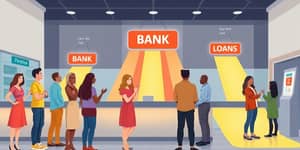
Imagine feeling the weight of a looming deadline as you stare at an unpaid loan notice. Your heart races, and you wonder what happens next. Your personal loan can be a strategic lifeline when used wisely. Yet, one missed payment can trigger serious fallout that ripples across your entire financial ecosystem. In this article, we explore the reality of delinquency versus default, highlight crucial statistics, and guide you through practical steps to protect your credit and peace of mind.
Delinquency refers to a single missed payment on your personal loan. This could be as simple as forgetting a due date or facing a temporary cash crunch. By contrast, default occurs when payments remain unpaid for an extended period—often three to six months, depending on your lender’s policy. During this time, you transition from delinquent to default status, which carries permanent marks on your credit profile that can last for years.
Most lenders offer a grace period or late fee window before declaring default. It is crucial to review your loan agreement so you understand how many days you can miss without triggering severe penalties. Understanding this timeline can mean the difference between a manageable hiccup and a long-term credit disaster.
Defaulting on personal loans is not an isolated issue. In the United States, about 3.4% of personal loans are currently in default. Consumer credit balances soared past $5 trillion in early 2024, and delinquency rates on all consumer loans at commercial banks reached 2.75% by Q4 2024. These numbers surged amid rising living costs and higher interest rates, especially among subprime borrowers who face the steepest challenges.
Private credit markets are also feeling the strain. The KBRA estimated default rates in private credit at 1.9% in 2024—a figure that analysts expect to climb as economic pressures mount. Aggregate household debt delinquency reached 3.6% by the end of 2024, with auto loan and credit card delinquencies particularly elevated among borrowers with weaker credit histories.
When you miss a personal loan payment, immediate financial penalties begin to stack up:
These costs may seem small at first—a $10 late fee or a single overdraft—but they accumulate with every missed month, making recovery progressively harder.
Your payment history makes up 35% of your FICO score and 40% of your VantageScore. Even a single late payment can cause a drop of up to 100 points if you previously had excellent credit. Moreover, negative records such as late payments, charge-offs, or loan defaults remain visible on your credit report for seven years, casting a long shadow over your financial reputation.
Lower credit scores lead to higher borrowing costs in the future. You may be forced into high-interest personal loans, automotive financing with steeper rates, or credit cards with punitive fees. Worse yet, you could be denied credit outright, making even basic purchases or home rentals difficult to secure.
Once your account is seriously delinquent, lenders and collection agencies ramp up their efforts. Initially, your lender may contact you directly via phone calls and letters. If you continue to miss payments, the account is often transferred or sold to a third-party collection agency. These agencies can be persistent and aggressive in their pursuit, contacting you at home, work, and even leaving messages with family or co-workers.
If collection attempts fail, lenders may escalate to legal action. At this stage, unsecured loans permit the lender to sue you for the balance owed. A court judgment could authorize wage garnishment or asset liens. Secured loans carry the additional risk of collateral repossession. Below is a breakdown of potential actions:
Legal proceedings not only increase your financial burden but also introduce public records that can be discovered by potential employers or landlords.
Defaulting on a personal loan reverberates through many aspects of life. You may find your ability to borrow declines dramatically. Lenders view you as high-risk, demanding higher interest rates or rejecting applications outright. Insurance premiums can rise, as insurers sometimes consider credit history. Landlords may require larger security deposits or deny rental applications. Employers in certain sectors might view credit defaults as a red flag for financial responsibility.
The cumulative effect is restricted financial freedom for years. Simple milestones like buying a home, leasing a car, or securing business financing become steep uphill battles.
Fortunately, you can take proactive measures to avoid default or mitigate its damage:
Open communication is key. Ignoring notices only escalates penalties and collection intensity.
Borrowers with lower credit scores face steeper challenges. Subprime interest rates can exceed 20%, and delinquency rates among this group are disproportionately high. Auto loan and credit card delinquencies hit subprime borrowers hardest as vehicle prices rise and credit card utilization spikes. Online lenders may deploy more aggressive collection tactics, including frequent digital and mail communications.
It’s crucial for subprime borrowers to shop for reputable lenders, compare hardship policy terms, and avoid predatory offers that promise easy qualification at the cost of exorbitant fees.
Defaulting on a personal loan can feel overwhelming, but knowledge and action can keep you on firm financial ground. By understanding the difference between delinquency and default, recognizing the ripple effects on your credit score, and engaging with your lender early, you can avoid many of the most damaging outcomes. Though the path to recovery may be challenging, proactive management can restore your financial stability and pave the way for a brighter, debt-free future.
References













